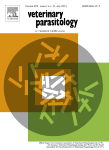Metarhizium anisopliae CQMa128 regulates antioxidant/detoxification enzymes and exerts acaricidal activityagainst Psoroptes ovis var. cuniculi in rabbits: A preliminary study
Xiaobin Gu,Na Zhang,Yue Xie,YouleZheng,Yuhang Chen,Xuan Zhou,Xiaoying Li,
Zhijun Zhong,RanHe,Guangyou Yang

Abstract
The entomopathogenic fungi Metarhizium anisopliae is highly pathogenic toward arthropods. Here, we evaluated the efficacy of a commercial formulation of M. anisopliae against P. ovis var. cuniculi in vivo and in vitro and explored the acaricidal mechanism of M. anisopliae by determining the antioxidant/detoxification-related enzymes activities including glutathione S-transferase (GST), superoxide dismutase (SOD), peroxidase (POD) and catalase (CAT) in mites. The results showed that M. anisopliae had high acaricidal activity against P. ovis var. cuniculi in vitro, in a time- and dose-dependent manner, with 83.33 % mortality at day 9 and a median lethal time (LT50) of 6.10 days after applying 6.14 × 109 conidia/ml of M. anisopliae. In vivo experiments, M. anisopliae achieved 100 % therapeutic effect after 3 days, compared with only 62.21 % for ivermectin. Enzyme assays showed that M. anisopliae significantly upregulated activities of GST, SOD and CAT in Psoroptes mites. The results indicate that M. anisopliae may be an effective biological agent for control of P. ovis var. cuniculi infestations in rabbits and the acaricidal activity may be associated with the changes of enzyme activities of the detoxification and antioxidant system in Psoroptes mites.
copyright© 2020 Elsevier B.V. All rights reserved.
Veterinary Parasitology 279 (2020) 58–63. doi.org/10.1016/j.vetpar.2020.109059
Read Full Text:https://sciencedirect.xilesou.top/science/article/abs/pii/S030440172030039X
